The Art of the Pour Over

The coffee community is a broad and diverse coalition, comprised of Aeropress fanatics, espresso gourmands, cowboy coffee enthusiasts, pour-over perfectionists. We revel in coffee in all its expressions, but what inspired our product lines — The Ratio Eight and the Ratio Six — is that simple, smooth, sweet cup of filtered coffee, and of the way it is often crafted: via a pour-over. So we thought it might be useful to talk about what the heck a pour-over even is, and why we’ve ported its most critical features into our approach to coffee.
So what’s a pour over? It’s exactly what it sounds like: coffee brewed manually, affording complete control to the brewer: you decide what temperature the water should be, how fast or how slow to pour it. You choose how balanced the flavor is, how strong the brew.
OK, maybe you knew all that. But did you know about the bloom? The trick to a perfect pour-over is to stop pouring, once you’ve added about twice as much water as there is coffee in your filter, and either stir what’s there or just wait, so the grounds have a moment to purge themselves of C02.

Did you know about agitation? By pouring water into your filter in a circular fashion, you shake things up, so that every last drop of water makes contact with every last grain of coffee.
The key to a balanced cup of coffee is consistency. Even if you’re willing to endure the fine art of a manual pour-over, you’re probably inconsistent, because you’re human. Did you get the temperature of the water somewhere between 195 and 205 degrees? Did you measure the grounds, the amount you poured in for the bloom? Did you agitate them just right?
It’s a routine that some find meditative, others a hassle. The Ratio does it all for you. While you’re surfing Instagram, packing lunch for the kids, planning a Saturday with your partner or whipping up brunch, this elegant device is crafting a precision brew, at the perfect temperature, the right level of agitation, an even flow and full saturation of the brew bed.

In 2015, we launched with the Ratio Eight, the company’s elegant flagship, which is conical in shape and open at the top, so you can watch the magic happen.

At the end of 2019, we released the Six, a true game-changer. It’s a totally enclosed, flat-bottom system, which offers a bit more consistency than a cone-shaped brewer and a more even extraction. That’s not to say it’s any better than the conical method. It isn’t. It’s just another option. We like those.
The Six and the Eight are different machines at different price points, and with a slightly different approach to brewing.
The Eight’s conical filter and open design is more akin to a manual pour over. You see, hear, and smell the coffee as it’s brewing, and the thick Chemex paper filter absorbs some oils out of the coffee, producing a clean and subtle brew. Like a rich cup of coffee but still want an open design? The permanent Ratio Kone will let more oils through than the Chemex paper filter.
The Six is more like a scaled down commercial batch brewer, with a completely enclosed brewing chamber that will trap more heat. If you’re the type that prefers really hot coffee, this is the brewer for you.
By adjusting the dose of coffee (more coffee for a heavier “mouth feel”) and the grind setting (coarser if coffee is tasting bitter, finer if it’s tasting sour), you can dial in the taste of the coffee you’re after on either machine.
You like the size and price of the Six but the conical filter shape of the Eight? Easy. Swap out the included thermal carafe for the Ratio glass carafe, and use either a Chemex paper filter or the reusable Ratio Kone. Best. Of. Both. Worlds.

Here’s what neither the Six nor the Eight will do to your coffee: burn it, because there’s no hot plate at the bottom scorching (ruining) your brew. We weep at the thought of you reheating coffee in the microwave, because that infuses the brew with quinic acid, which is tart and bitter. If you’re a slow drinker, we highly recommend the thermal carafe, which prolongs the amount of time coffee holds its sweetness. If you’re a slow walker, MOVE OVER :)

So there you have it, the best case we know how to make for convenience without compromise. But there are just a couple more thing we need you to know:
The grinder matters, a lot. Because your coffee grounds need a consistent interaction with the brew water, the size of the grind needs to be consistent. You want a burr grinder, which pulverizes beans between two burred plates for an even result. The Six prefers a slightly courser grind than the Eight, but we recommend some experimentation for best results.
And the very last thing?
The ratio, of course. We couldn’t forget the ratio.
Start with 1:16, coffee to water, which would be 70 grams of coffee for a full tank on the Ratio Eight and Six Then play with it. Because making good coffee isn’t just a work of art. It’s an act of joy.
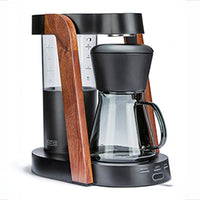 Ratio Eight S2
Ratio Eight S2
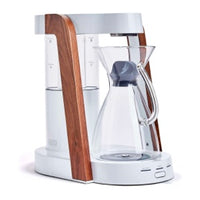 Ratio Eight Original
Ratio Eight Original
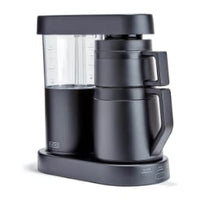 Ratio Six
Ratio Six
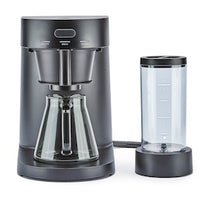 Ratio Four
Ratio Four
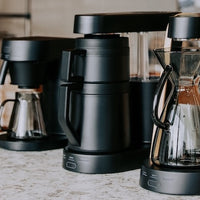 Compare Machines
Compare Machines






